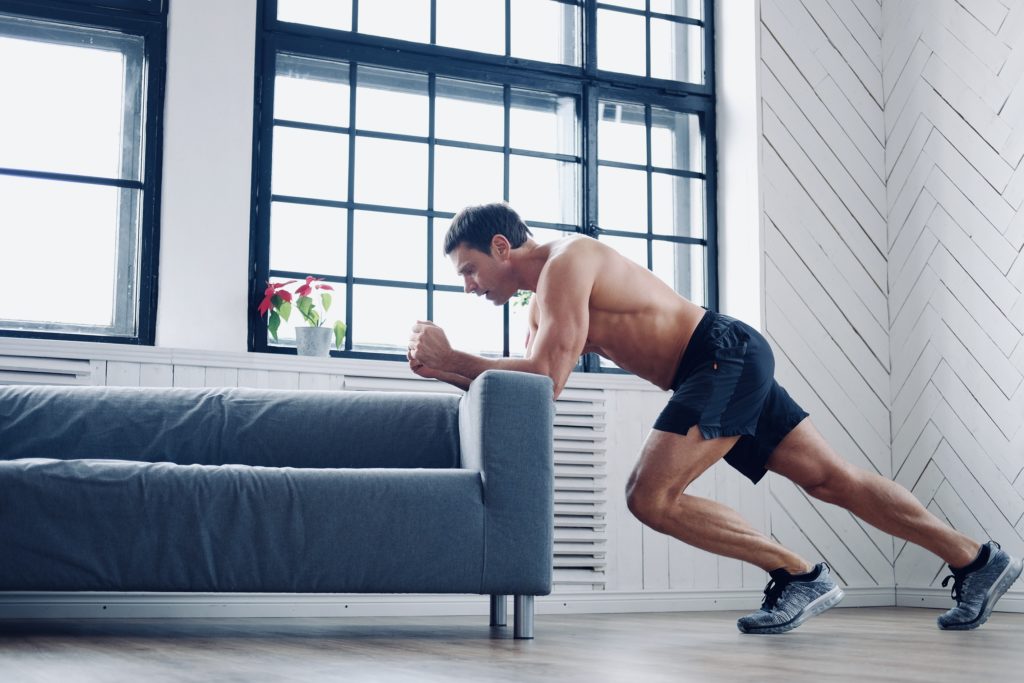If you suddenly find yourself restricted to exercise at home, you know how big a challenge it is to train certain muscles with the kind of intensity you’re used to. While it’s easy enough doing lunges and push-ups or various exercises with bands, it’s much harder to train your mid back and posterior chain (hamstrings, glutes, lower back).
The “Chinese” back plank is the best minimal-equipment exercise at home you’ve never tried. It works all those hard to hit places you’ve been struggling with, while offering huge benefits to your posture.
If you’ve been nominated for a push-up challenge like a hundred times then these’ll help undo some of the damage by working antagonis muscles. They’ll also open out your shoulders from all the extra sitting.
Feel free to join in the challenge myself and Fredrik Ferrier (TV’s Made in Chelsea) came up with. All you need are three chairs and a timer.
Why these work
Back planks recruit your entire posterior chain — When you exercise at home, your training inevitably becomes more “anterior” dominant. It’s much easier to push, squat and lunge, than it is to deadlift and row. Chinese back planks force optimal postural alignment while efficiently recruiting your calves, hamstrings, glutes, and low back isometrically.
Isometrics have many uses when working with your own bodyweight, some of which include high levels of muscle activation and creating an occlusion-type of effect. Both of which can help you maintain muscle and strength while training with limited resistance.
They hit your mid-back — Let’s just assume for a second that you’re lucky enough to have a chin-up bar. That’s great, and’ll help you train in a vertical pulling pattern. But for a well-rounded workout routine you mustn’t forget about the stuff between your shoulder blades.
That “stuff” (largely middle trapezius and rhomboids) helps pull your shoulders back, gives you a better look, improves your overall physique, and stops you from looking like a gorilla with an overworked chest and rounded shoulders. Chinese back planks help pull your shoulders back and target your mid-back with just your own body.
They improve your posture — Rounding your upper back and shoulders is really common, especially if you’re sat at a desk all day, or head down checking out your smartphone. I won’t blame modern technology and the work environment for this, though. Even sat reading a book or doing some knitting can put you in an awkward position.
Well guess what? If your posture and positioning is bad here, then it’ll likely be bad when you’re exercising too. Flip a Chinese back plank 90 degrees and you’ve got what should look like a good standing position – glutes and core engaged, shoulders back and head in a more neutral alignment. Work on your Chinese planks to build greater strength and posture for walking, running, and even deadlifts.
Progressions
Oh, and in case you were wondering; yes you can make back planks harder! You could try single-leg, but be prepared for some serious butt and hamstring cramping. Another option is to increase the width of the chairs supporting your upper body. This will require more back strength to hold you in position.
You might also place something across your hips to make it harder – If you were at a gym then a plate or some chains would be good, but if at home a few books should suffice. Just make sure you can nail 30 seconds with your own bodyweight first, before trying to get too big for your boots.
Exercise at home challenge!
If you’re stuck for an exercise at home that’s both challenging and effective, you should add Chinese back planks to your home workout routine.
To join in the Chinese back plank challenge on instagram all you need to do is film yourself doing it. 30 seconds is your target. Then tag me (@thefitnessmaverick) and Fredrik (@fredrikferrier) on your stories or posts to prove it.
Share with a friend if they appreciate a challenge, or just an exercise at home they’ll benefit from.

